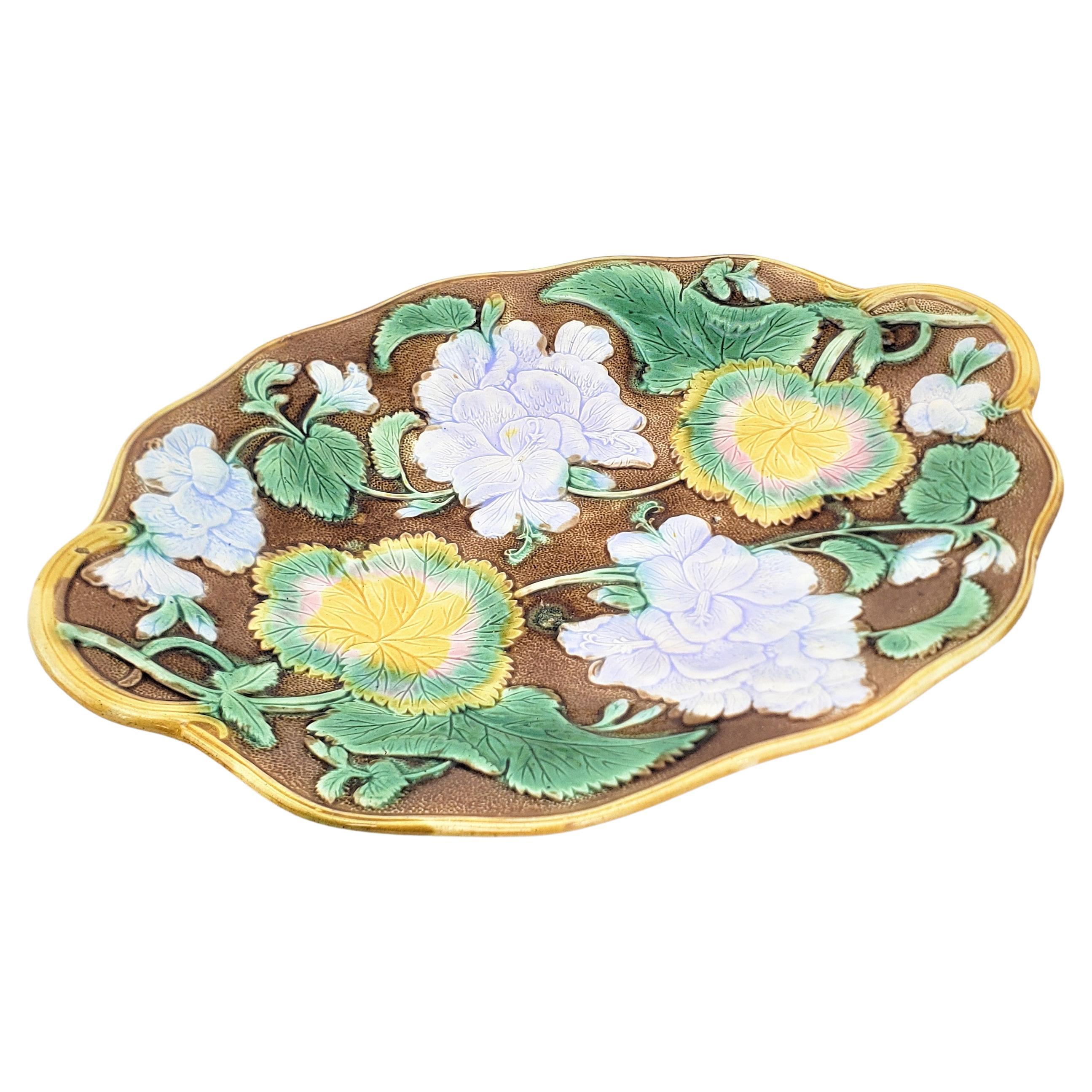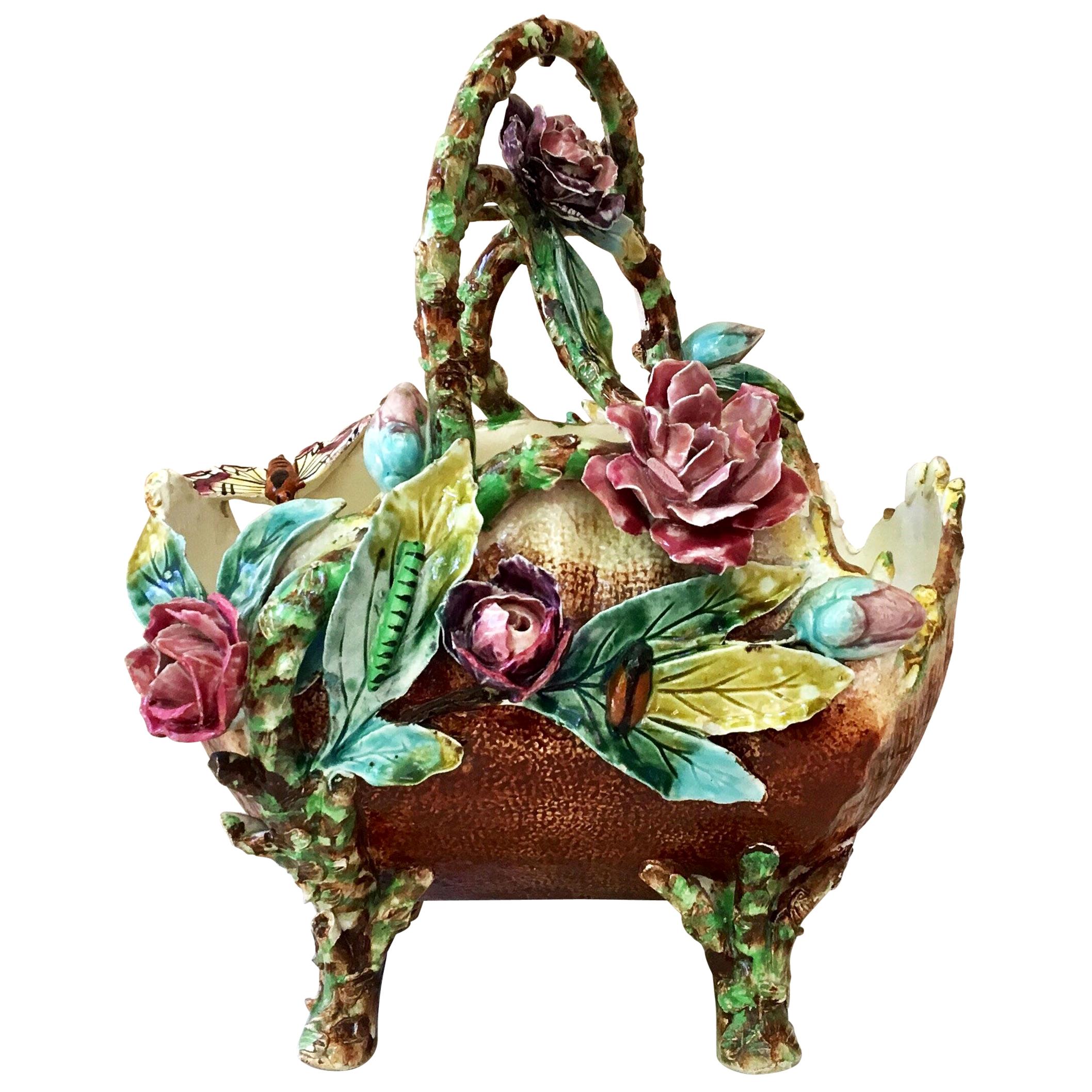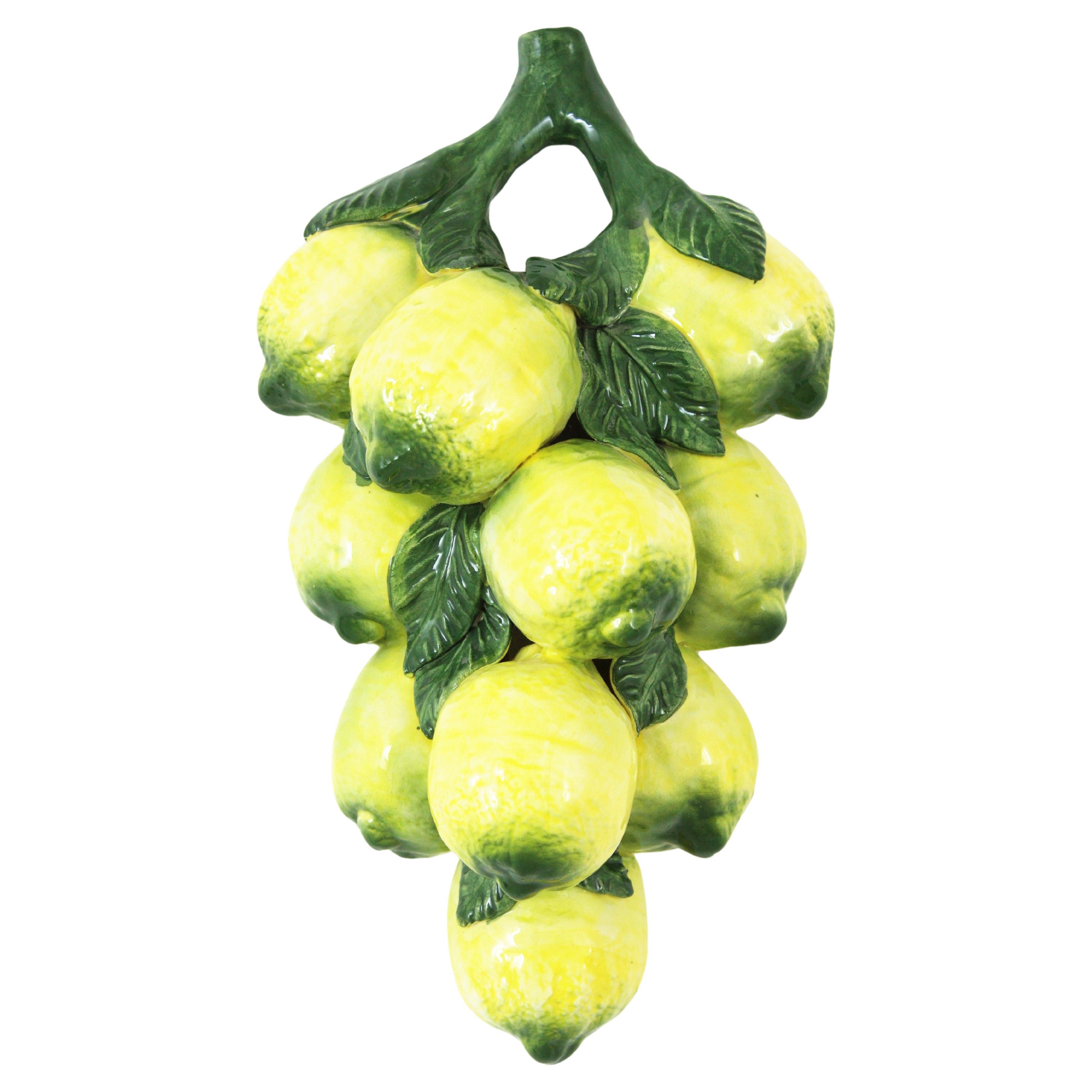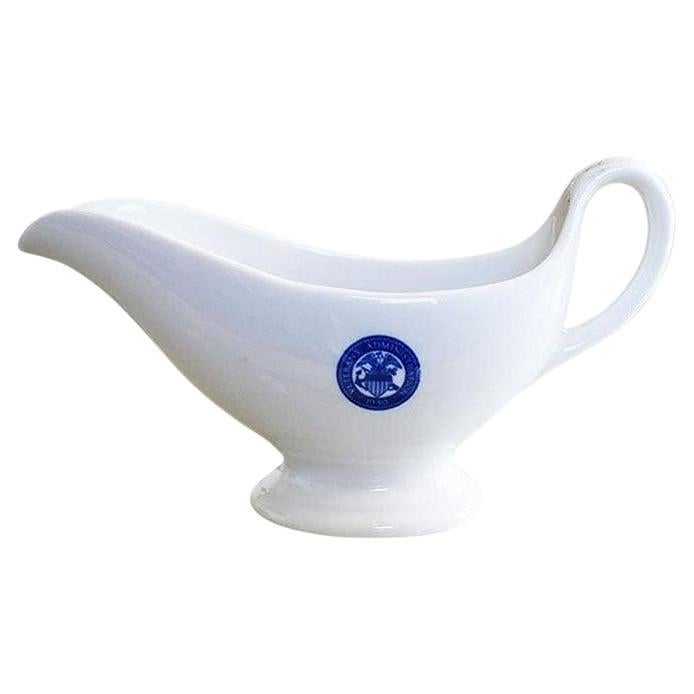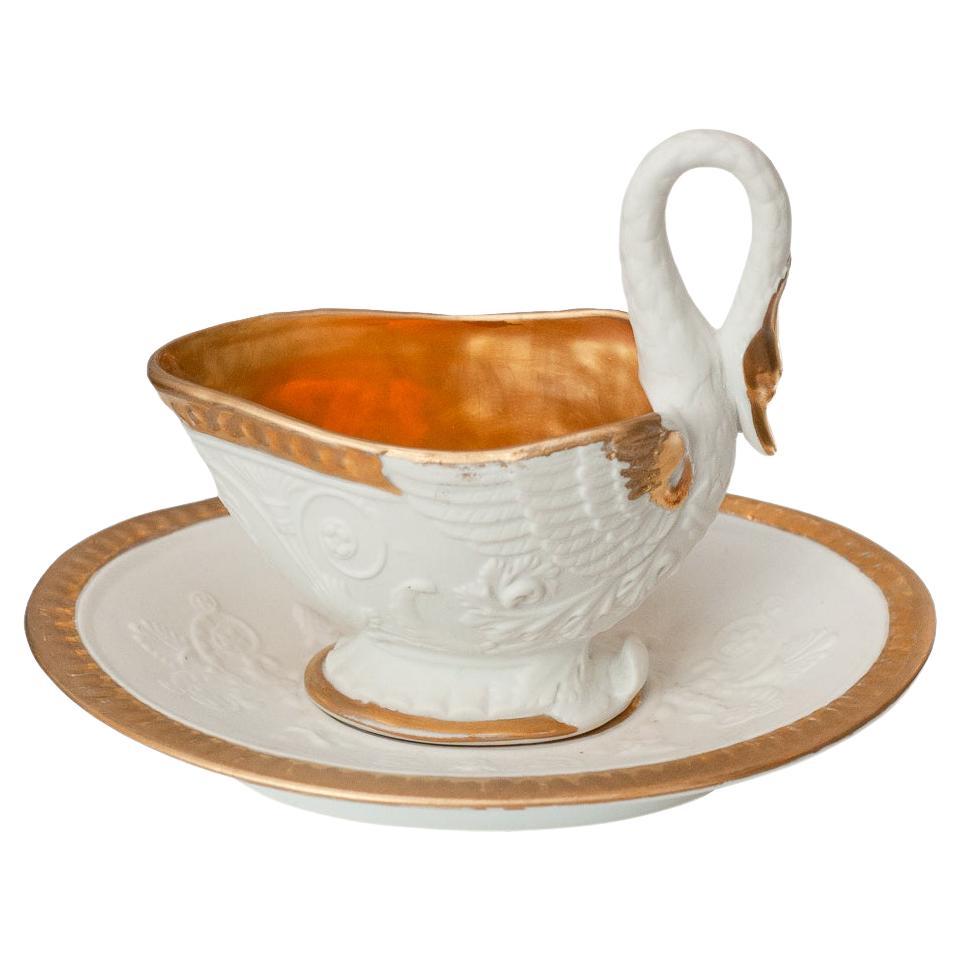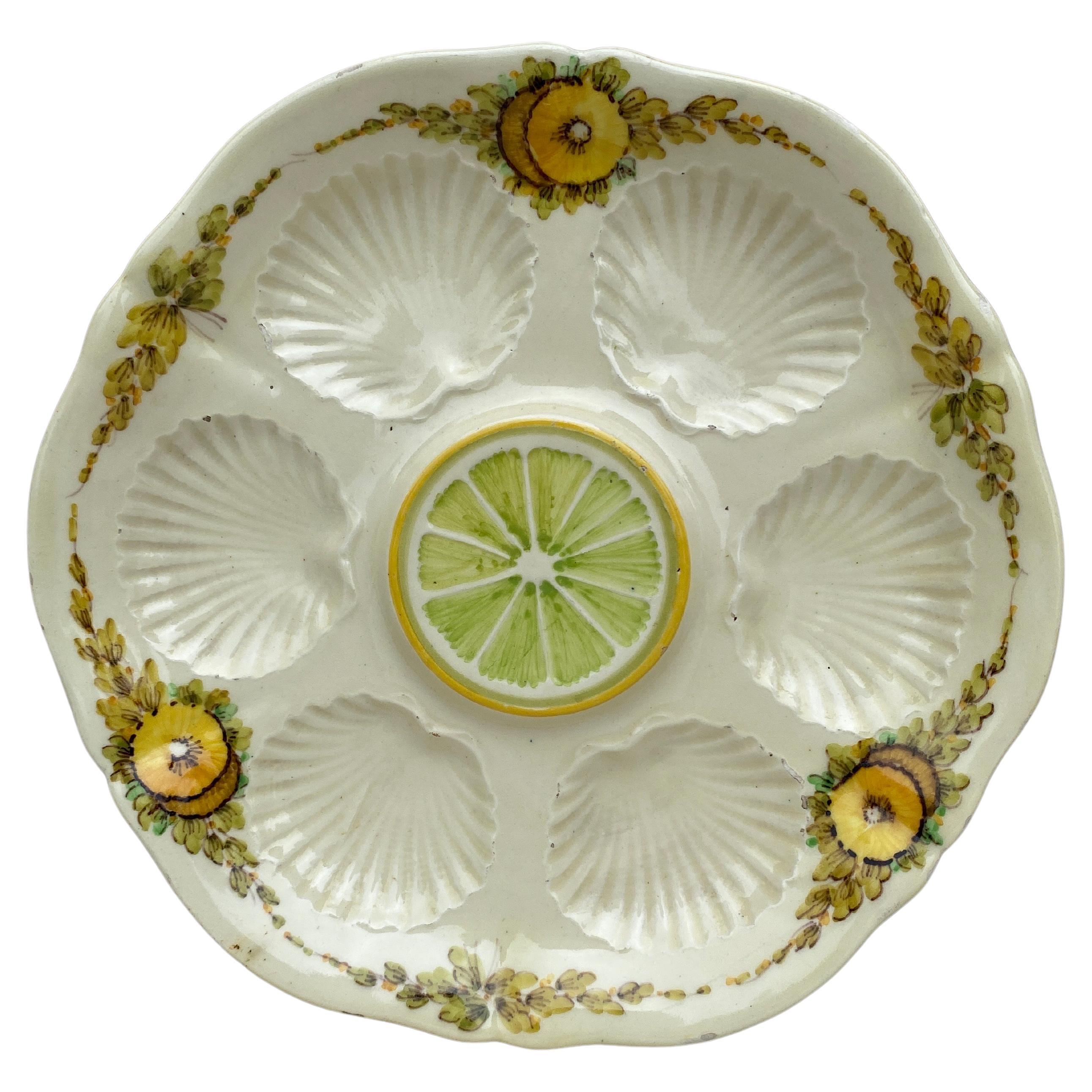Items Similar to Bertrand Leon Bordeaux French Majolica Gravy Boat "Capucine" Flower Decoration
Want more images or videos?
Request additional images or videos from the seller
1 of 18
Bertrand Leon Bordeaux French Majolica Gravy Boat "Capucine" Flower Decoration
About the Item
We kindly suggest that you read the whole description, as with it we try to give you detailed technical and historical information to guarantee the authenticity of our objects. Pretty and particular majolica gravy boat; it is a classic gravy boat with the plate integral to the container, but it has a very balanced and harmonious shape; the majolica was then enriched with elegant floral decorations made with the transfer wear method, in addition, time and use have created an interesting craquelé effect that makes the gravy boat even more refined. The mark on the bottom indicates to us that it was made between 1950 and 1955 in Bordeaux, France, by the Lèon Bertrand firm. Lèon Bernard, a native of Gironde, was an entrepreneur specializing in the trade of factory chimneys, for a rather obscure regulatory reason, founded a pottery factory at the end of the 19th century at 50 Rue Delbos in the working-class Bacalan district of Bordeaux; the firm, which was not large, but had skilled staff who produced a few but good quality items, essentially tableware and toiletries. Very original were the dinnerware services, the company had created several with refined floral ornaments, each service had as decoration a flower from the French folk tradition, there was the lily, lily of the valley, lavender, anemone, and many others, the names of the flowers were printed on the object together with the company stamp; our gravy boat was part of a service decorated with a very special flower the "capucine." The "capucine" (Tropaeolum majus) is a flower native to South America, with flowers of a beautiful deep orange color. In France, it is widely used in hanging baskets or decorating fences and walls. The company all decorations used the English method of "transferware." Transferware, which was very fashionable in the Victorian period, refers to glazed and decorated pottery with a specific treatment that they produced in Staffordshire England; they used copper plates on which the design was engraved, the plate was then inked and the design transferred to a special fabric that was later laid on the pottery (plates, trays, tureens, etc.) which was glazed and fired; the first to use this printing process were John Sadler and Guy Green of Liverpool in 1756. A hand-painted plate service could be afforded by a few English families; with this method, even middle-class families could have a decorated plate service. Measures width cm.25, width cm.17, height cm.11. The gravy boat is in good condition. For all our shipments we use special packaging materials (wooden crates, styrofoam, etc.) for maximum protection and safety of the items.
- Creator:L. Bertrand (Maker)
- Dimensions:Height: 4.34 in (11 cm)Width: 9.85 in (25 cm)Depth: 6.7 in (17 cm)
- Style:French Provincial (In the Style Of)
- Materials and Techniques:
- Place of Origin:
- Period:
- Date of Manufacture:1950-1955
- Condition:Wear consistent with age and use. The gravy boat is in good condition.
- Seller Location:Prato, IT
- Reference Number:
About the Seller
5.0
Gold Seller
These expertly vetted sellers are highly rated and consistently exceed customer expectations.
Established in 1977
1stDibs seller since 2019
235 sales on 1stDibs
Typical response time: 4 hours
- ShippingRetrieving quote...Ships From: PRATO, Italy
- Return PolicyA return for this item may be initiated within 14 days of delivery.
More From This SellerView All
- Haviland & Co. Limoges French Gravy Boat in White Porcelain and Gold DecorationBy Haviland & Co.Located in Prato, TuscanyWe kindly suggest that you read the entire description, as with it we try to give you detailed technical and historical information to guarantee the authenticity of our objects. We would like to inform you that the object, described below, was part of a complete service that we have divided and we offer the loose sale of the individual pieces. Elegant gravy boat with a lid and plate made of white Limoges...Category
Early 20th Century French Napoleon III Porcelain
MaterialsPorcelain
- Art Decò Green Enameled Terracotta Vase with Pure Gold Decorations, FranceBy Sainte RadegondeLocated in Prato, TuscanyWe kindly suggest you read the whole description, because with it we try to give you detailed technical and historical information to guarantee the authenticity of our objects. Parti...Category
Mid-20th Century French Art Deco Ceramics
MaterialsTerracotta
- Staffordshire Potteries English Tray with Blue Transferware DecorationsBy Clementson BrothersLocated in Prato, TuscanyWe kindly suggest you read the whole description, because with it we try to give you detailed technical and historical information to guarantee the authenticity of our objects. Lovely and refined English oval ceramic tray; elegant and rich blue decorations have been executed on the white background using the transferware method; the mark on the back tells us exactly that the object was produced by the Clementson Brothers LTD Company between 1901 and 1913 at the Phoenix factory in Shelton, the company made a wide range of objects with this decoration called "Delf" ( see mark no.909 p.150 of "Encyclopaedia of British Pottery and Porcelain Mark"). Transferware, which was very fashionable in the Victorian period, refers to glazed and decorated pottery with a specific treatment that they produced in Staffordshire, England; they used copper plates on which the design was engraved, the plate was then inked and the design transferred to a special fabric that was later placed on the pottery (plates, trays, tureens, etc.) which was glazed and fired; the first to use this printing process were John Sadler and Guy Green of Liverpool in 1756. If we look at the pottery made by this method we will notice that the designs are not perfect and often the ink is smudged: this is their characteristic. A hand-painted plate service could afford few English families, with this method even middle-class families could have a decorated plate service. The Clementson Firm was founded in 1839 by Joseph Clementson, who retired from the business in 1867, leaving the factory to his four sons and son...Category
Early 20th Century British Victorian Ceramics
MaterialsCeramic
- Copeland-Spode English Tray with Blue Transferware DecorationsBy Copeland SpodeLocated in Prato, TuscanyWe kindly suggest you read the whole description, because with it we try to give you detailed technical and historical information to guarantee the authenticity of our objects. Elegant and refined English octagonal ceramic tray; on the white background, soft and rich blue decorations have been executed using the transferware method; in the center we find the poetic and graceful representation of the Severn River and the town of Bridgnorth (the name of this decoration is "Severn"), while the edges of the tray are adorned with sumptuous and spectacular flower and leaf decorations. The Severn River is the longest river in the United Kingdom (350 km), rising in Wales and flowing into the Bristol Channel; Bridgnorth is an ancient Saxon settlement; observing the view of the river and town from his castle at Bridgnorth King Charles I Stuart (1600-1649) said "the most beautiful sight in all my kingdom". On the back of the tray there are 3 imprinted marks including one with final number 14, then we find in the center a blue mark, these indicate to us exactly that the tray was produced in Stoke-on-Trent by the Copeland-Spode company in 1914 (see mark no.1079 p.172 of "Encyclopaedia of British Pottery and Porcelain Mark). The Spode firm was founded in the heart of the Potteries - Stoke-on-Trent by Josiah Spode in 1770. Josiah Spode is most famous for developing the specific design technique that meant underglaze transfers could be printed on earthenware. Later, focusing on porcelain production, Josiah Spode pioneered the development of a new form of porcelain, originally called "Stoke China...Category
Early 20th Century British Victorian Ceramics
MaterialsCeramic
- Ruscha Keramik Germany Vintage Ceramic Vase With Japanese DecorationBy RuschaLocated in Prato, TuscanyWe kindly suggest you read the whole description, because with it we try to give you detailed technical and historical information to guarantee the authenticity of our objects. Black ceramic vase with Japanese decoration painted and enameled in relief, this vintage product was made between 1960 and 1965 by Ruscha Keramik...Category
Mid-20th Century German Mid-Century Modern Ceramics
MaterialsCeramic
- Deruta Italy Set 5 Ceramic Plates with Cobalt Blue DecorationsLocated in Prato, TuscanyWe kindly suggest you read the whole description, because with it we try to give you detailed technical and historical information to guarantee the authenticity of our objects. Set of five charming ceramic plates with rich cobalt blue decorations on a white background; three plates have a diameter of cm.30 and are the two with both painted on the bottom a little bird surrounded by flowers and vine shoots but with different border decorations, the other is the one with a star painted in the center and a flowery border; the other two have a diameter of cm.33 and have a pomegranate design in the center surrounded by vine shoots, both again with different borders. They were all painted exclusively by hand and faithfully reproduce ancient Umbrian decorations from the 1700s; made between 1950 and 1954 in a small artisan workshop in Deruta (Perugia-Italy). The ceramic mixture is coarse (see photos of the back of the plates) characteristic of Deruta ceramics...Category
Mid-20th Century Italian Neoclassical Revival Ceramics
MaterialsCeramic
You May Also Like
- Small Antique Majolica Serving Dish or Platter with Leaf & Flower DecorationLocated in Hamilton, OntarioThis small antique platter or server is unsigned, but presumed to have originated from England and date to approximately 1880 and done in the period V...Category
Antique Late 19th Century English Victorian Ceramics
MaterialsCeramic
- French Majolica Flowers and Insects Basket, circa 1880Located in Austin, TXAntique French majolica basket with flowers and butterfly, bug, and insect accents, circa 1880. No maker's mark. Some chips.Category
Antique 1880s British Aesthetic Movement Planters, Cachepots and Jardini...
MaterialsMajolica
- Majolica Ceramic Lemons Wall Decoration / Wall SculptureLocated in Barcelona, ESStunning lemons Manises Majolica ceramic wall decoration, Spain, 1960s. Handcrafted ceramic wall hanging sculpture featuring a bunch of...Category
Mid-20th Century Spanish Mid-Century Modern Wall-mounted Sculptures
MaterialsCeramic, Majolica
- Veterans Administration 1930 Ceramic Restaurantware Gravy Boat in Blue and WhiteLocated in Oklahoma City, OKA crisp white ceramic gravy boat with Veterans Administration 1930 in blue marked on the front. This piece is by Shenango China and is a well-known make...Category
20th Century American American Classical Ceramics
MaterialsCeramic
- Antique Sèvres Biscuit Porcelain Swan Gravy Boat and Underplate with GildingBy Manufacture Nationale de SèvresLocated in Toronto, ONA beautiful antique Sèvres swan sauce boat in biscuit porcelain with gilded detail. This smaller scale sauce boat is a whimsical addition to the table ...Category
Early 20th Century French Serving Pieces
MaterialsPorcelain
- French Majolica Oyster Plate With Yellow Flowers, circa 1890Located in Austin, TXUnusual French Majolica oyster plate with yellow flowers and lemon on the center, circa 1890.Category
Antique 1890s French Rustic Dinner Plates
MaterialsCeramic, Faience
Recently Viewed
View AllMore Ways To Browse
All Glass Flowers
Vintage Flowers Decoration
Glass Boat
Boat In Glass
French Safety
French Engraved Glasses
Silver Safety
Bordeaux Vintage
Boat Shape
Lavender Flower
Mid Century Glass Ornaments
Staffordshire Flowers
Vintage Floral Ornament
Victorian Vintage Flowers
Flowers Staffordshire England
Lavender Glass Vintage
French Silver Plate Tray
Vintage Hand Painted Ornaments
